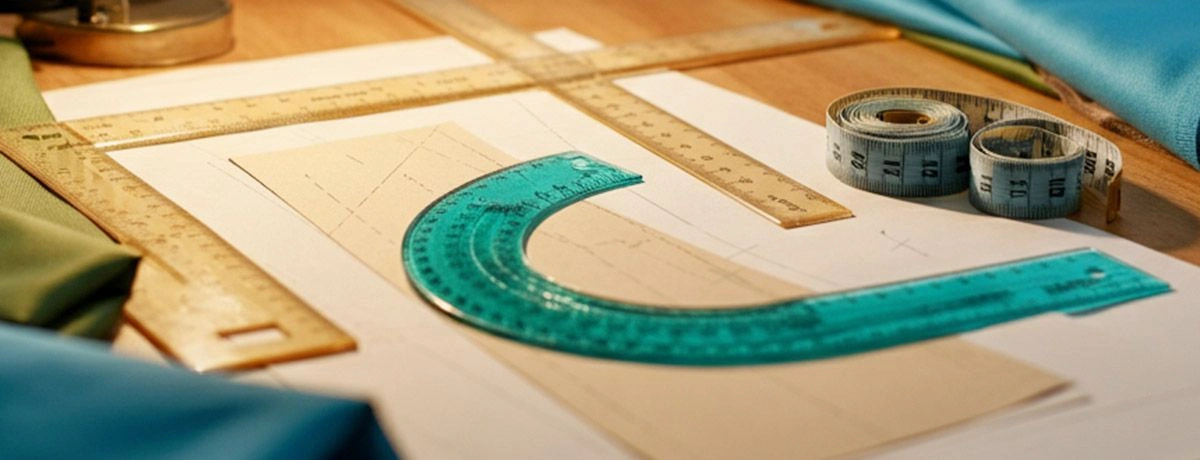How to Use a Measuring Ruler for Sewing and Other Tools?

Precision defines quality in garment manufacturing and textile production. Without accurate measurements, even the finest fabrics and skilled craftsmanship fall short of professional standards. Measuring tools serve as the foundation for every successful sewing project, from industrial-scale garment production to specialized textile applications.
This guide examines the critical role of sewing measuring rulers and related tools in achieving consistent, professional results. Understanding these instruments enables manufacturers, designers, and textile professionals to maintain quality standards, reduce material waste, and streamline production processes. Accurate measuring tools are essential for a wide range of sewing projects, including garments like pants and accessories such as bags, where precise width measurements and clear reference points are critical for professional results.
Why Measuring Tools Matter in Sewing
Measuring tools ensure accuracy and precision across all stages of textile work. They eliminate guesswork from garment construction, quilting, and pattern development. Precise measuring tools are essential for a variety of sewing projects, especially when working with small measurements where printed markings on rulers ensure clarity and accuracy. Professional-grade measuring instruments deliver consistent results, reducing errors that compromise product quality and increase production costs.
Accurate measurements enable manufacturers to create garments that meet exact specifications. Proper use of measuring tape, rulers, and gauges minimizes fabric waste and rework. These tools save time by establishing clear guidelines for cutting, marking, and assembly operations.
Types of Measuring Rulers
Straight Rulers
Straight rulers form the backbone of fabric measurement and marking. Available in lengths from 6 inches to 48 inches, these tools measure and mark straight lines, seam allowances, and perpendicular angles. Metal rulers offer durability for industrial applications, while clear acrylic versions allow pattern visibility during marking. A straight, nonflexing edge is essential for accurate measurement and marking, and traditional rulers made from wood are valued for their rigidity and durability.
Some straight rulers can also be used with a stick or pin to help draw circles or arcs for pattern drafting.
Curved Rulers
Curved rulers address the complex shapes required in pattern drafting, with the French curve being a classic tool for creating smooth, curved lines. French curves accommodate necklines and armholes, while hip curves handle larger pattern adjustments. Curved rulers are also used to draw circles and other rounded shapes, which are essential for certain pattern pieces. These specialized tools ensure smooth, professional curves in pattern pieces. Using consistent units along the curve helps replicate shapes accurately across multiple pattern pieces.
Square Rulers
Square rulers, including L-squares and T-squares, establish accurate right angles essential for pattern drafting. The L square is a specialized tool designed to ensure precise 90-degree angles, making it invaluable for fabric cutting and drafting. These tools verify grain lines, create perpendicular measurements, and ensure pattern pieces align correctly. Triangles are also commonly used in quilting and pattern drafting for precise right-angle measurements. Their precision prevents distortion in finished garments.
Transparent Rulers with Grid Markings
Transparent rulers featuring grid markings combine measurement with pattern transfer capabilities. These versatile tools work effectively with rotary cutters for fabric cutting. The clear material allows precise alignment over patterns and marked fabric. Transparent rulers provide clear reference points, enabling accurate measurement and pattern transfer for sewing, tailoring, or quilting projects.
Specialized Sewing Rulers
Quilting rulers and garment-specific measuring tools cater to specialized applications. These tools come in a variety of styles to suit different sewing needs. These rulers include features like angle measurements, seam allowance guides, and curve templates designed for particular sewing tasks. A tape measure is an essential tool for taking flexible body measurements in garment construction.
Essential Measuring Tools for Professional Sewing
Measuring Tape
Measuring tape remains fundamental for body measurements, fabric yardage, and curved surfaces. Professional-grade tape measures extend 60 inches or more, with clear markings on both sides. Fiberglass or plastic-coated fabric tapes resist stretching and maintain accuracy over time.
Seam Gauges
Seam gauges provide quick, consistent measurements for seam allowances, hems, and buttonhole spacing. These compact tools feature adjustable slides that lock at specific measurements, enabling rapid repetitive marking without repeated measurement.
Rotary Cutters and Rulers
Rotary cutters paired with specialized rulers deliver precise fabric cutting. A rotary cutter is a handheld tool with a circular blade designed for smooth, straight cuts through multiple fabric layers. The combination reduces cutting time while maintaining accuracy. Clear acrylic rulers with non-slip backing prevent shifting during cutting operations.
Drafting Tools Integration
Measuring tools work alongside drafting instruments to create and modify patterns. Rulers, tape measures, and gauges combine with pattern paper, tracing wheels, and marking tools to produce accurate pattern pieces.
MH: Your Source for Quality Sewing Supplies
MH serves as a professional wholesale supplier of garment accessories and fabrics from China. The company focuses exclusively on wholesale distribution, providing consistent quality and reliable supply to manufacturers and textile professionals worldwide.
MH's product range includes comprehensive measuring tools alongside threads, zippers, fabrics, lace, ribbon, and other essential garment accessories. The company's commitment to quality and long-term partnerships has established its reputation in the global market.
Wholesale buyers benefit from MH's expertise in textile supplies and garment accessories. The company's focus on wholesale operations ensures competitive pricing and reliable inventory for manufacturing operations.
Selecting the Right Measuring Tools
Choose measuring tools based on specific application requirements. Industrial operations demand durable metal rulers and heavy-duty tape measures. Pattern drafting requires transparent rulers with clear markings and specialized curve templates.
Quality measuring tools deliver consistent accuracy over extended use. Invest in professional-grade instruments that maintain calibration and resist wear. Replace damaged or worn tools promptly to maintain measurement accuracy.
Consider tool storage and organization when selecting measuring instruments. Tools that store efficiently reduce workspace clutter and prevent damage. Magnetic rulers, retractable tape measures, and compact seam gauges optimize workspace organization.


